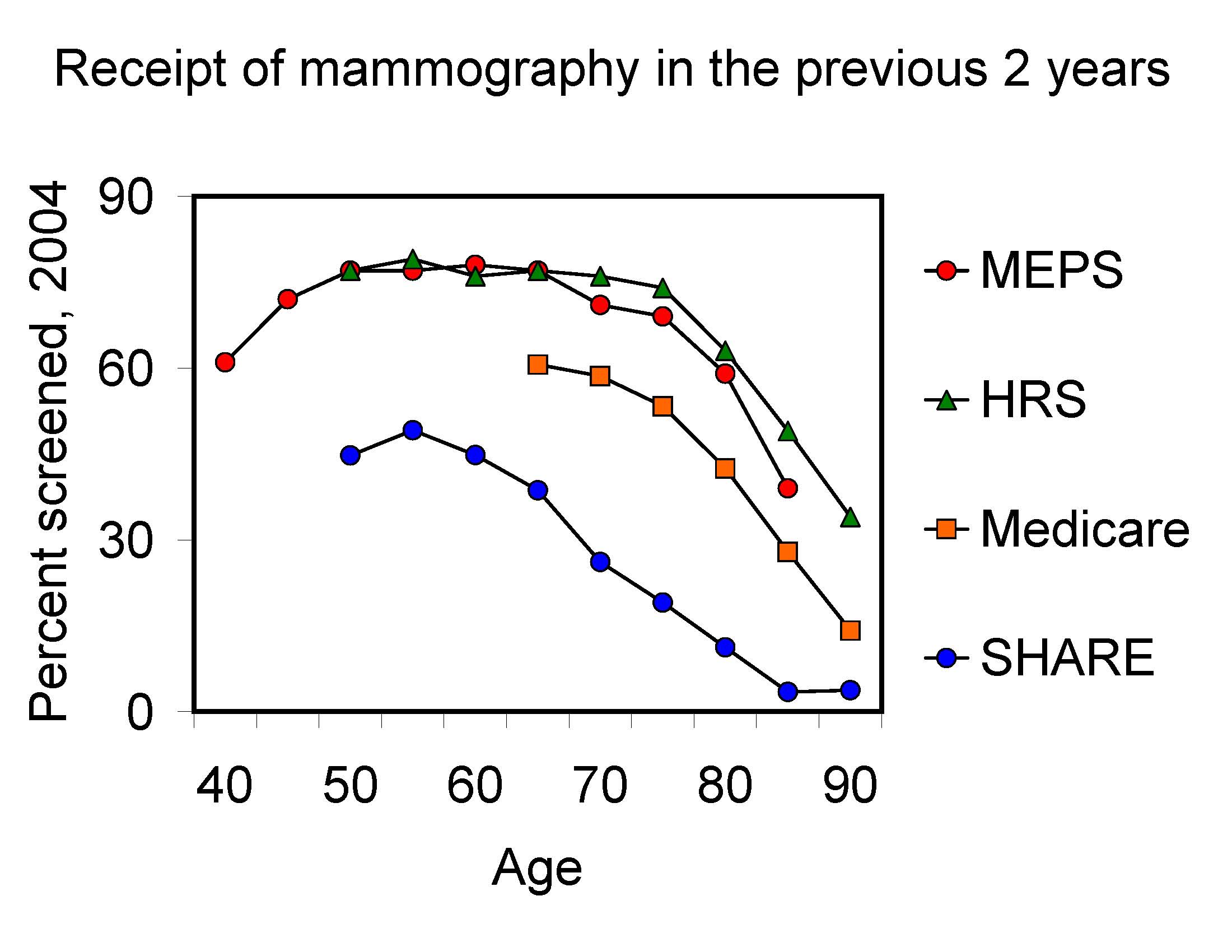|
||||
Monday, October 22, 2007
P2-11
THE RELATIONSHIP BETWEEN CANCER SCREENING AND AGE IN THE U.S. AND EUROPE
Methods: Screening rates were measured using the 2004 and 1998 Medical Expenditure Panel Surveys (MEPS) and the 2004 Health and Retirement Survey (HRS) in the U.S. and the 2004 Survey of Health and Retirement in Europe (SHARE) and the 1998 Eurobarometer survey in Europe. Additionally, U.S. screening rates were measured using Medicare claims data.
Results: The graph below shows mammography rates by age in 2004. The top three lines show U.S. rates as measured by MEPS, HRS, and Medicare claims. The bottom line shows the mammography rate in Europe as measured by SHARE. The mammography rate in the U.S. is substantially higher among all age groups. Similar patterns were observed for colonoscopy and pap smears.
Conclusion. Results suggest that cancer screening is under-used in Europe, as indicated by low screening rates in age groups where screening has the greatest potential to improve longevity, and overused in the U.S., as indicated by higher screening rates in older age groups where the value of screening is questionable. More broadly, these results point to a possible source of higher per capita health spending in the U.S.: the U.S. health system takes a more aggressive approach to screening and treating conditions like cancer.


